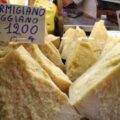 The Local Girls – Cheese At it’s Best
The Local Girls – Cheese At it’s Best
Michal Haines
I have had the honour for the last four years of judging for the annual Cuisine Champions of Cheese Awards and this year I have been asked back to sit beside a technical judge and consume vast quantities of cheese. As someone who would eat cheese any day over chocolate, I had no qualms when I was first invited to participate. Now, after a succession of years, I am still very honoured, but know exactly what I am getting myself in for.
The day passes as one in which a room full of people consume what maybe the annual intake of cheese per capita for the average Frenchman all in the space of around nine hours. By the next day the sheer weight of all that cheese makes me thankful I have a pretty cast iron stomach for such things but I’m pleased to enjoy a few lighter items over the next few days to help my afflicted tummy.
I am surprised to in a time when so many are burdened with lactose intolerance and like to avoid those fats that can be easily denoted as fuller due to their most wonderful sloppy texture, that the awards grows in size every year.
I guess as a country with a long tradition in cheese we should expect it to be a staple in the average kiwis kitchen-at least the good old block of Colby anyway.
I am constantly delighted to see more New Zealanders asking for New Zealand made cheese of note in speciality food stores and delis rather than just buying the stock standards at the supermarket. Without these experimental folk and without the cheese awards, we run the risk of losing these very brave and talented people in our communities who have picked up one of the oldest traditions on earth and continue to bring us the curiosity that is cheese.
I find the whole genre of cheese fascinating. A living and growing organism that changes it’s mind on a daily basis, it can give us so many different styles and flavours depending on such small factors. Those who have had the experience of eating something like Saint Agur, produced since the 4th century in the same region in France know that it can be a truly life changing experience. But that same experience could be enjoyed when consuming a lovingly handled and aged piece of sheep’s milk made in a manner that hints at the long tradition of Pecorino in Italy. While we can speak eagerly about the incredible taste experience it was to first taste ‘real’ pecorino in Tuscany and how superior it was to anything we have tried back home, I tend to lean heavily on the side of romanticism of the taste buds here. Yes I can never deny that eating something made in the same traditional manner that is has been for possibly centuries using milk that might well be from the great, great granddaughter of a sheep way back in the day has to lend itself to a very particular flavour. What we also must forget is that the mere fact of being there, possibly on holiday, having not been at work for weeks and enjoying an adventure that will be a talking point for quite some time provides us with taste bud romanticism.
We can’t compare, we can discuss, taste and critique in order to allow those cheese makers to improve upon a product to such an extent that they have created something unique to them, unique to their region and their milk quality.
I love with a passion those classic cheeses from France that have the perfect texture, the abundant aroma, their rind quality so high and flawless body but we must push ourselves to buy New Zealand made. Find those who are passionately and tirelessly working at bringing you something new. Sure, it will cost you near on the same as those imported French beauties but if we are ever going to build upon the traditions that are already deep seated here in New Zealand, we have to show a supporting hand to smaller producers and warrant them the time to try their cheeses and give them feedback, either directly or via your local buyer.
There are some very good cheeses out there. Very, very good and all made from the milk of our very own local livestock. They are waiting for you to take them home and lovingly undress them so they can reveal their true body to you. Leap in and have a go.
Creating a great Cheeseboard
Tasting is the most important thing you can do before you undertake the exciting adventure that creating a cheeseboard can be.
Take advantage of good advice in stores and let yourself be guided through. A good food store will be able to discuss the important issues of:
Ripeness-what may be good for tonight might not be ok for your dinner party next Thursday
Flavours-what are you eating prior or after that may affect what you take home
Personalities-Talk about those who hate blue, cant stomach goat, don’t like wash rinds….they are your guests so it has to work for everyone and being a good host is all about getting the right fit
Price-be honest about how much you want to pay so the person guiding you can offer you what is the best within your price range, the ripest and most appropriate for your gathering
Cheese or Wine-many make the mistake choosing both elements very separately. Decide who the star is in this course-the cheese or the wine and buy appropriately.
Three isn’t necessarily the perfect number when it comes to cheese boards. Neither is the typical one blue, one white one hard rule. Some of those who are experts in the field do some of the most incredible pairings with up to fifteen cheese, some say five is the perfect number and anything in between seems to go.
Cheese shouldn’t be a paint by numbers sort of affair. Something this wonderful deserves time and attention to detail to get it right.
There are some rules but you don’t have to abide to them too strictly. The other thing to remember when it comes to matching anything is if you like it, it makes it right.
If you are having an after dinner cheeseboard you may well be thinking dessert wines with enough sweetness and body to warrant cheese also with enough body to handle it. Think also of what you have just eaten. I shy away from anything with huge cream levels if I have just worked my way through a massive eye fillet for instance but at the same time, I might look to toward something creamy but with a more acidic tone to lighten things up particularly if I am serving it with say fresh season nectarines and peaches. Matching is about matching it all-not just one cheese to a wine but all that appears on your board as well as matching them to a cracker or bread that has the right texture, the right accompaniments and even the right guests. It can be a complex affair and this is where regularly buying from a store that you trust and know well, you will build a good relationship with the staff. They are there to set you on the right path and guide you through the flavour, milk and texture minefield of cheese so that it will be a pleasurable affair.
How much to buy is an often asked question and rightly so. There is nothing worse than scrappy bits of half eaten cheese hanging about in the fridge. If you simply work on this little guideline, this hideous problem will be relieved:
-tasting plate/ nibbles 35-50g per person per cheese and no more than three cheeses
-main course/antipasta style 50-80 grams per cheese per person and no more than six cheeses
-After Dinner 40-50 grams per person and no more than five cheeses
I think this is even being pretty generous gram wise so always take into consideration what else you are serving and I always think that with cheese and those big rich flavours go smaller and enjoy rather than big and too much.
If you are thinking of getting in early and storing your cheeses for a few days there are few easy rules to bear in mind. These also are good rules just for general cheese storage than will keep them in good health.
Don’t ever freeze a cheese
Don’t let them dry out by leaving them poorly wrapped in the fridge
Don’t allow them to be exposed to extreme temperatures-back and forth from the fridge is a no no.
Do check them regularly if you are keeping them for more than a few days and make sure that if they are ripening too fast that you eat them when they deserve to be and not after -there will always be more cheese
Do rewrap them as needed
Do allow them to breathe so plastic containers are a no no and purest demand no plastic wrap just paper
Do cut to expose less of the body of the cheese to air
Do trim the edges of your cheeses prior to eating if you have had them in the fridge for a wee while
Matching for me is often around what I know has just come into season. If I know fresh new season Marlborough grown walnuts have arrived then I will likely be more inclined toward a fuller bodied blue with medium cream and a little acidity to really compliment the woody, caramel tones of the walnuts. Served with a beautiful sourdough to edge that acidity a little bit more, it is something I could easily make a meal of.
New season stone fruits can appear on the cheeseboard alongside fresh sheep’s milk cheese easily. The nature sweetness of the stone fruit as well as the lovely textures work to even up the acidity of the fresher sheep’s milk. The fruits could also be lightly grilled to really make things interesting. Matched with a syrupy gewürztraminer full of bright stone fruity flavours….. yum!
Remember that it is actually all about you and the golden rule as I mentioned before-if you like it then damn the rules!!
Cheese, like all food is about enjoyment. Sit back and really savour the wonderful texture and taste of what is available to you out there. Buy local but also buy imported. Taste, test and ponder





